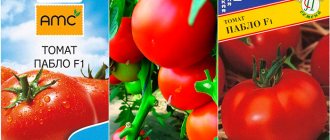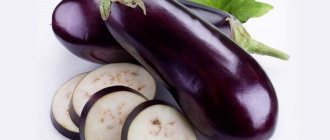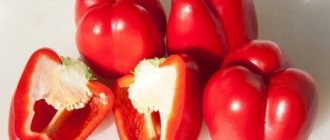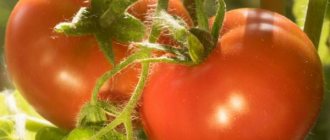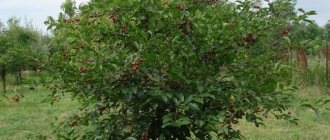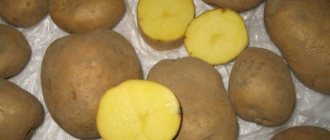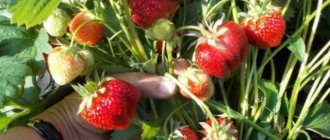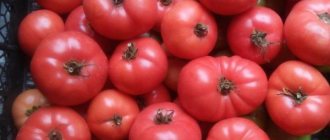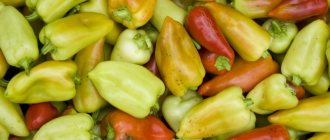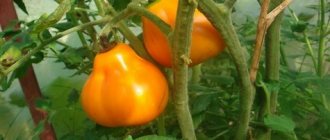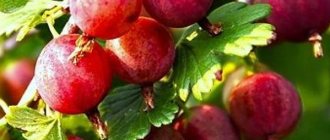- 6.1 Seedling growing method
Pablo beets are a Russian variety of universal use. It has a good taste, attractive shape and high yield. Resistant to frost, drought and most diseases and pests.
Characteristics and description of the variety
First of all, it is worth noting that this variety is a hybrid and was first bred in Holland . Recently it has been grown quite often on a large scale. The growing season lasts approximately 105 days. Low temperatures will not harm the plant; it is also resistant to low temperatures, lack of humidity, many major diseases, and also grows well in almost any type of soil.
After harvest, the fruit of the crop can be stored for quite a long time and retain its positive properties; it is also good for transportation.
Experts note a fairly high level of beet yield, approximately 700 centners per hectare. The fruits have a hard wall, the average weight of the fruit reaches about 180 grams, has a round shape and a purple hue.
Plant immunity
When choosing a variety, a summer resident pays attention to such characteristics as susceptibility to diseases. The plants are resistant to cercospora blight, bolting, and scab. The root beetle is not afraid of culture.
Timely fertilizing with potassium makes beets practically immune to diseases typical for the crop.
If the plantings are attacked by rodents, which damage both foliage and root crops, the rows of plantings are sprinkled with wood ash or tobacco dust. They use chemicals purchased in specialized stores.
Photo
Check out the photo of this type of beet.
Advantages and disadvantages
In total, this type of beet has only one immediate drawback. But the number of positive qualities is very large. Let's start by examining what is more, that is, with positive qualities:
- First of all, it is worth noting resistance to moderate lack of moisture;
- the fruit of the crop contains a large amount of positive substances, namely sugar and betanin;
- high percentage of yield, about seven kg per square meter;
- the plant does not require the use of special soil for growth;
- the crop and its fruit retain its beautiful appearance for a long time;
- high resistance to various types of diseases;
- the plant's root can be recycled after it dies.
The only drawback in this case is that the plant can still be damaged by certain diseases. But this deficiency plagues almost all garden crops.
How is this root vegetable useful?
Pablo beets retain most of their nutrients when cooked. For the human body, it has both therapeutic and harmful effects. You should be careful when consuming this crop.
The effect of beets on the body:
- Clears away toxins.
- Strengthens blood vessels.
- Used to prevent diseases of the circulatory system.
- Wounds are washed with fresh juice.
- Affects the functioning of the gastrointestinal tract.
- Causes disturbances in the genitourinary system.
Reduce the amount of product used in food when:
- Gastritis.
- Stomach ulcer.
- Diabetes mellitus.
When consuming the product in large quantities, you should carefully monitor your well-being.
Step-by-step instructions for growing
Next, we will consider the method of growing a plant, and we will analyze each process in turn. We will look at the method of growing a crop using seeds.
- Where and for how much can I buy seed material? For sowing, material can be purchased at any relevant store. In Moscow, a bag of seeds is slightly more expensive than in St. Petersburg, 36 and 24 rubles, respectively.
- Boarding time . Experts recommend carrying out the planting process either in May or June. You will figure it out more specifically depending on the climate in your area.
- Choosing a landing site . It is very important to choose the right place for planting. The landing site should be well lit and also be as spacious as possible. After all, it is the sun’s rays that allow this variety to ripen as quickly as possible.
- What should the soil be like ? Regarding the soil, we have already said that the plant is unpretentious to a certain type of soil, but if you want to achieve maximum results when growing, you should listen to the recommendations. The soil on your site should not be highly acidic. If you improve the soil before planting with humus, this will help make the fruit tastier and more juicy.
- Landing . Planting seeds should be carried out if the soil is already sufficiently warmed up. The depth of the hole is no more than 30 cm, and the distance between the holes is no more than 20 cm. After planting the seeds, moderate watering is necessary.
- Temperature . It is also important to choose the right temperature when planting, which should optimally reach about 18-20 degrees above zero.
- Watering . It is worth noting that this beet variety is absolutely not afraid of major droughts, but again, when achieving maximum results, you should resort to rational watering. After all, moisture in moderation makes the fruit more juicy.
- Feeding . Pablo's beets do not require any additional type of nutrition. But if you have the desires and means, then you can add fertilizer to the soil, which contains potassium. This element helps to increase the amount of harvest and also reduce the time of ripeness.
- Other measures for caring for vegetables . Special attention should be paid to prompt weeding of the site and removal of weeds. This is especially important at first, when sprouts appear. In order for a plant to develop well, it needs a huge amount of humidity, sunlight and beneficial elements.
Landing dates
The timing of planting Pablo beets depends on the method of cultivation and the climatic characteristics of the region. If planted in open ground, you need to wait until the soil warms up to 8 degrees Celsius or higher. Moreover, according to the forecast, there should be no return frosts, since some of the crops may die due to them.
Therefore, most often, summer residents choose the following dates:
- south - early April;
- middle band – end of the month;
- other regions – the first half of May.
If you plant Pablo beet seeds in a greenhouse, you can do this 7–10 days earlier. In the case of growing seedlings, they focus on the same periods, taking into account that the seedlings need to be transferred to open ground a month after germination:
- south – beginning of spring;
- middle zone – the last days of March;
- other regions – the first half of April.
Advice! The seedlings are transplanted into the beds after four true leaves appear.
If the weather is unfavorable, you can wait a few days, but no more. Otherwise, the seedlings will stretch, which will have a bad effect on the yield.
Harvesting
Pablo F1 beets ripen at the end of August or the first ten days of September. It belongs to the mid-early plants. Approximately 80 days pass between the emergence of seedlings and the ripening of fruits. From 1 m² they harvest 6–7 kilograms of crop.
It is possible to determine the period for harvesting root crops based on their volume and the condition of the tops. If the leaves become dry and begin to turn yellow, and the diameter of the beets reaches 15 cm, it is possible to begin work.
The fruits are dug out of the ground with a pitchfork or shovel. Next, they are cleaned of soil and the tops are trimmed at a distance of 1–2 cm from the beets.
Harvest storage
After harvesting, it must be stored at a temperature no higher than two degrees , and the humidity should be about 90 percent. To make storage as comfortable as possible for the fruits, they can be placed in boxes and covered with a layer of sand. Often the harvest is stored in cellars or in special pits, the depth of which is about two meters. It’s not difficult to dig a hole and then place it on the bottom of the board.
How to water correctly
The answer to the question of how to grow Pablo F1 sweet beets is therefore not too complicated. Water should be supplied to the beds with these hybrids “at the root”. The frequency of watering depends on weather conditions. It is extremely undesirable to moisten the soil in a bed with such beets with cold water. The water should sit in a garden container for at least two days. For 1 m2 of hybrid planting, it should be used in an amount of approximately 15-25 liters. The soil in Pablo’s garden bed should not be allowed to dry out. But beets should not stand in water all the time. It is best to always keep the soil in the garden moist.
Judging by the reviews and statements of breeders, the fruits of this beet do not grow too large. However, in mid-August, watering Pablo F1 should still be stopped. In this case, it will be possible to obtain compact root vegetables with very good taste. If there is excessive humidity in August, Pablo's beets may grow too watery.
Sometimes red spots appear on the leaves of this hybrid. Their presence indicates a lack of sodium in the soil. The problem in this case is solved by watering the plants with salt water (1 tbsp per 10 liters). During the season, such a procedure should be carried out at least three times.
Diseases and pests
If the owner has violated the rules for caring for beets, then they may be exposed to certain diseases and pests:
One of the most common diseases of this type of crop is mosaic. In this case, the leaves may become covered with different spots at the same time. In this case, no treatment has yet been discovered. Therefore, the plant simply dies.
- When rust-colored pads appear on the plant, this also indicates improper care. In this case, the leaves also dry out.
- Beetroot can be affected by a disease called peronoporosis. The leaves in this version acquire a lighter color, and the reverse side becomes purple.
- The most common beet pest is the beet aphid. In this case, the yield becomes much less, and the leaves simply curl. But in order to eliminate the pest, you can simply spray the tops with a soap solution.
- The so-called wireworm can also become a pest. Such a character, as a rule, feeds on beets, during which they begin to rot.
- Flea beetles are also negative characters for beets of this type. Such pests are capable of eating away the leaves of the plant. For preventive measures in this case, it is worth pollinating with DDT powder. It is also necessary to eliminate the weeds on which these flea beetles live.
Readers may find useful articles about other varieties of table beets: Vodan F1, Boro, Kestrel F1, Mulatto, Detroit, Bordeaux 237.
Preventive measures against damage
Many representatives select the Pablo variety for the reason that it is quite resistant to pests. Many diseases, which are even more serious in their severity than those listed above, are not capable of damaging the plant. But beets have been damaged by certain types of rodents. In order to scare them away, you need to sprinkle the soil with ash, or use the so-called tobacco dust. You can also reduce rodent damage in advance, for example, in the fall. This process can be carried out in this case if you do a deep digging of the soil.
A variety called Pablo F1 is a very productive crop . Due to the fact that the type of beet is quite stable in the cold season and also tolerates drought well, it has become popular in many cities of our country. The fruits of the plant are very tasty and are well suited for preparing many dishes.
If you find an error, please select a piece of text and press Ctrl+Enter.
Farmer reviews
Many gardeners know about the Pablo variety .
Some summer residents have already tried to plant vegetables on their plots, while others are only planning planting for the next season. What do Russian farmers say about Pablo? Alexander, Saratov : “I plant only hybrids, they rarely get sick and show a stable harvest. Pablo always produces beautiful and smooth vegetables, some of which can be stored for six months. The taste is sweet, the flesh is dense and juicy.”
Marina, Orel : “I tried to plant Pablo’s beets with seedlings. After 10 days, the sprouts began to actively develop. Despite the cool summer, the harvest exceeded all expectations. I now advise all gardeners to plant Pablo’s beets.”
Ruslan, Tyumen : “In my opinion, the Pablo variety has average yield compared to other mid-late varieties. The taste is slightly bitter, although I watered and fertilized the beds according to all the rules.”
